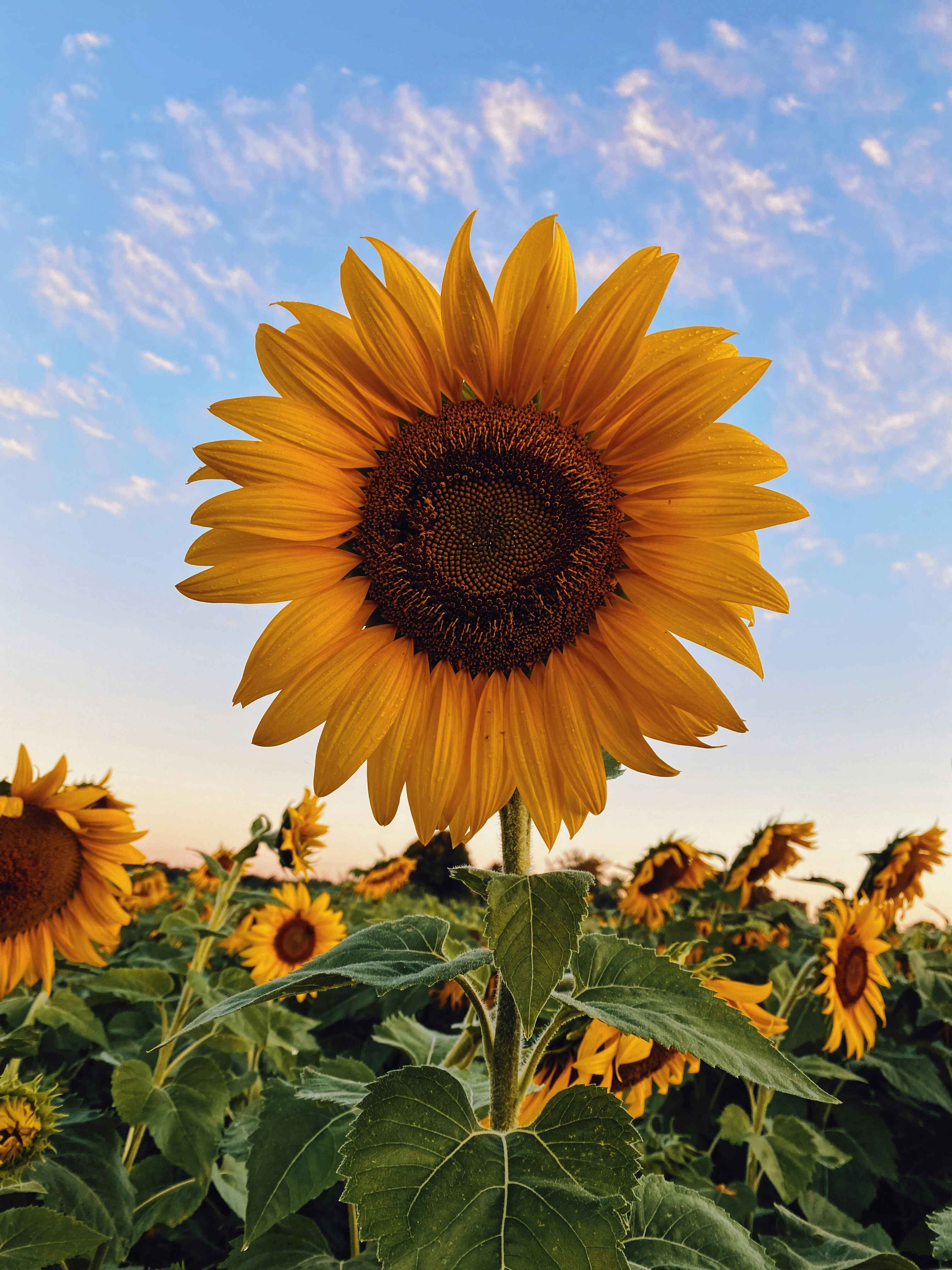Growth of A Sunflower
"A miniature sun you can hold in your hands - radiant, mysterious and a dedicated follower of the sun." - Jona E., USA
There’s something about sunflowers that has always felt like a gift. Even before I ever planted one myself, they had a way of brightening my day. I’d see them standing tall along the side of the road, golden faces turned toward the sun, as if they carried little pieces of sunlight within them. No matter what kind of day I was having, they were there—the sunshine in my day.
But it wasn’t until I planted a sunflower myself that I truly understood their wonder. It started as the smallest thing—a single seed, tucked into a small pot of soil. Every day, I watched with anticipation. Pop - a tiny sprout has emerged still with it’s sunflower seed hat on! Then, as the sprout grows taller it stretches it’s two sprout leaves and knocks off it’s hat. From there it grows it’s first real leaves, delicate but determined, reaching upward as if it already knew its purpose.
The growth was astonishing. First, small leaves, then larger ones, until the plant was no longer something tiny but something strong. It stretched taller and taller, as if it couldn’t wait to meet the sky. It weathered windy days on my 21st floor balcony. And then came the bud—tightly wrapped, full of promise. The bud turned with the light, following the path of the sky, always reaching for those bright warm rays. The anticipation was almost unbearable. Every morning, I checked, wondering if today would be the day it finally unfurled.
And then, one morning, it happened. The bud had begun to open, revealing golden petals like rays of sunlight breaking through the clouds. The transformation was mesmerizing—not just the burst of color, but the way the sunflower seemed to embody the very essence of the sun itself. .
As the days passed, I watched the center of the flower change. What was once smooth and golden became textured, a slow and patient process of seeds forming—seeds that could begin this entire journey all over again. While I’d always known about this cycle of a sunflower it was something magical to see the entire journey firsthand. It wasn’t just a flower; it was a cycle, a quiet miracle unfolding in plain sight.
Growing that sunflower changed the way I saw them forever. They weren’t just bright spots on the side of the road anymore; they were symbols of resilience, of growth, of unwavering faith in the light. A reflection of the sun itself, not just in color but in spirit.
And now, whenever I see a sunflower, I don’t just see a flower. I see everything it took to become what it is. And I can’t help but stand in awe.
More about sunflowers from the Wonders Team
There are almost 70 species of sunflower, most of which originated in North America. Most sunflowers are the bright yellow color we associate with them (and most are of the Common Sunflower variety) but there are varieties that include orange, red and purple sunflowers.
Before the sunflower blooms it will tilt it’s head up to face the sun. This behaviour is called heliotropism and is caused by growth on the opposite side of the flower which happens as a result of growth hormones accumulating during sun exposure. It has been found that this behaviour does not occur if there have been long sunless periods or if the plant is grown in artificial light conditions where the light source does not move.
Domestic or cultivated sunflowers face similar threats to other cultivated crops including fungal infestation. Fusarium in particular causes an increasing amount of damage to sunflower crops. Broomrape, which is a parasitic plant also causes damage to several plant species including the sunflower. Wild sunflowers face threats from industrial forestry and pine plantations. To find beauty, we need balance.
